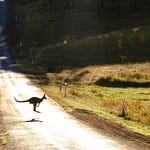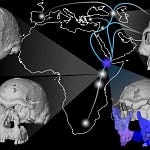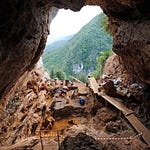Oyster shells seem like straightforward storytellers. They pile up in middens, layer by layer, preserving traces of harvest, feast, and shoreline life stretching back thousands of years. For archaeologists, shell size has long been treated as a clue to past abundance. Bigger oysters implied less pressure; shrinking shells signaled overharvesting.

But what if that tidy equation bends under the weight of time, tides, and a pickaxe?
A new study in the Journal of Archaeological Science1 argues that the archaeological baseline for oyster populations may be warped by a deceptively simple oversight: broken shells. The fragments often ignored during excavation might hold the key to understanding ancient fishing pressure more accurately. And they might reveal that some long-trusted reconstructions of coastal ecosystems need a second look.
In South Florida, two midden sites tell a sweeping story of feasting, ritual, and shoreline engineering. Yet their oysters whisper something quieter: a warning about survivorship bias.



